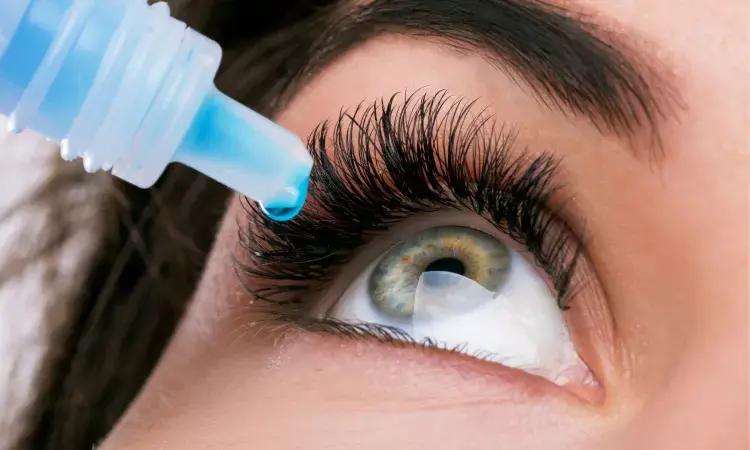Varenicline Nasal Spray May Improve Tear Production In Dry Eye Disease
- byDoctor News Daily Team
- 01 August, 2025
- 0 Comments
- 0 Mins

Varenicline nasal spray effectively manages Dry Eye Disease and improves tear production and DED signs.
A recent study evaluating the efficacy of varenicline nasal spray (VNS) versus vehicle/placebo for treating dry eye disease has concluded that VNS use improves Schirmer test scores over 28 days of treatment.
They noted more incidence of cough and throat irritation in the VNS group.
The lead researcher of this study, “The efficacy and safety of varenicline nasal spray for the management of dry eye signs: a systematic review and meta-analysis”, is Dr Bader Bashrahil and is published in BMC Ophthalmology.
It is already known that the leading cause of DED is persistently unstable tear film causing ocular discomfort. This eye condition is treated using tear supplementation. Emerging evidence supports the effectiveness of nicotinic acetylcholine receptor (nAChR) agonists (e.g., varenicline and simpinicline) nasal sprays for managing DED.
In the present study, the team assessed the efficacy and safety of varenicline nasal spray (VNS) for DED treatment using databases like CENTRAL, Medline, and Embase.
The mean change in the anaesthetized STS or Schirmer test score, a measure of basal tear production, from baseline was the efficacy endpoint and serious adverse events (SAEs) and adverse events (AEs) were the safety endpoints.
The main Results of the study could be summarised as follows:
A total of 3 RCTs with 1063 participants met the eligibility criteria and had a low risk of bias.
On day 28, there was an increase in the mean STS change from baseline.
There was no significant difference between VNS and placebo in SAE and ocular AE frequency.
They found VNS had a substantial effect on developing nasal cavity-related AEs.
They said that VNS improved efficacy endpoints and increased the frequency of nasal cavity-related AEs like cough and throat irritation.
They noted there were neither SAEs nor ocular AEs.
The study limitations include low numbers, inconsistent pooled results and high heterogeneity.
They mentioned that upcoming studies should focus on comparing its safety and efficacy against currently established management options.
Further reading:
Bashrahil, B., Taher, N., Alzahrani, Z. et al. The efficacy and safety of varenicline nasal spray for the management of dry eye signs: a systematic review and meta-analysis. BMC Ophthalmol 23, 319 (2023). https://doi.org/10.1186/s12886-023-03069-y
Disclaimer: This website is designed for healthcare professionals and serves solely for informational purposes.
The content provided should not be interpreted as medical advice, diagnosis, treatment recommendations, prescriptions, or endorsements of specific medical practices. It is not a replacement for professional medical consultation or the expertise of a licensed healthcare provider.
Given the ever-evolving nature of medical science, we strive to keep our information accurate and up to date. However, we do not guarantee the completeness or accuracy of the content.
If you come across any inconsistencies, please reach out to us at
admin@doctornewsdaily.com.
We do not support or endorse medical opinions, treatments, or recommendations that contradict the advice of qualified healthcare professionals.
By using this website, you agree to our
Terms of Use,
Privacy Policy, and
Advertisement Policy.
For further details, please review our
Full Disclaimer.
Tags:
Recent News
Gum disease could silently cause serious brain dam...
- 03 November, 2025
Can Early-Day Fasting Significantly Boost Metaboli...
- 03 November, 2025
Delhi HC bars doctor from running medical centre d...
- 03 November, 2025
Phase III data for Gazyva/Gazyvaro show significan...
- 03 November, 2025
Daily Newsletter
Get all the top stories from Blogs to keep track.


0 Comments
Post a comment
No comments yet. Be the first to comment!